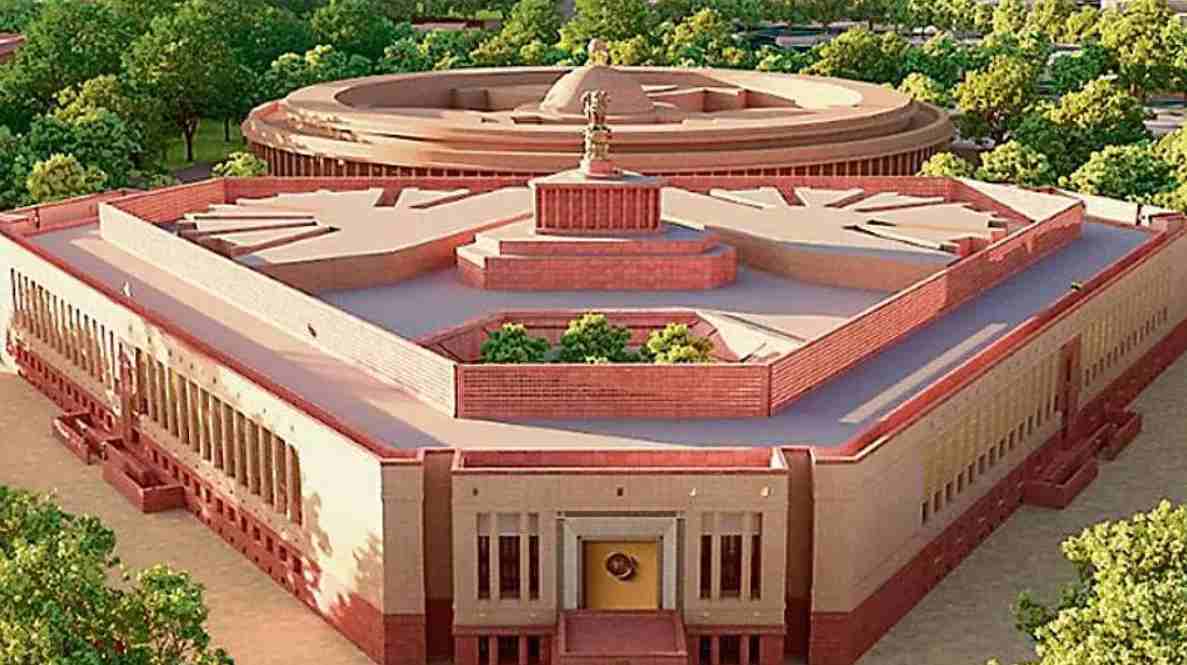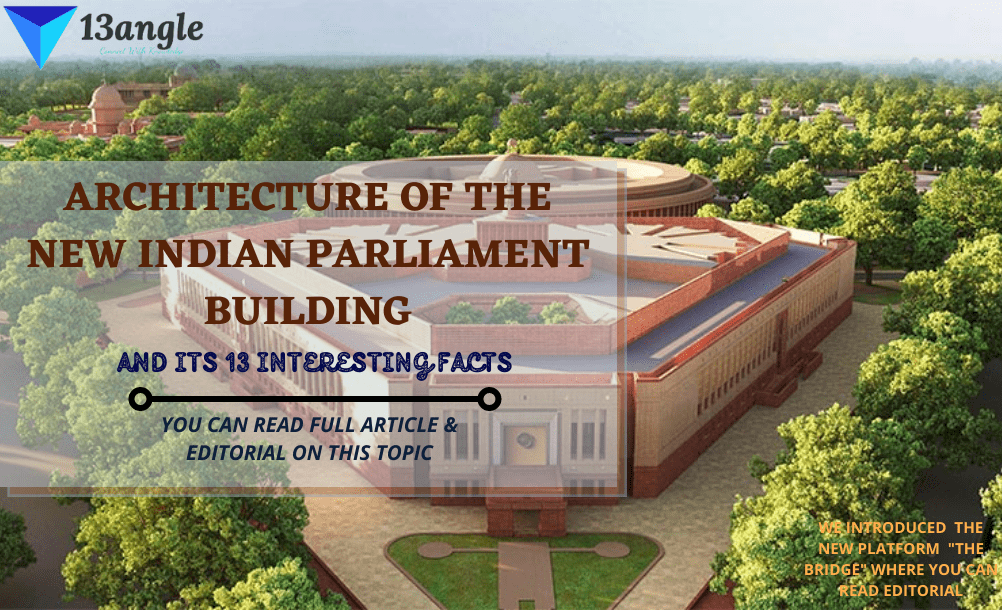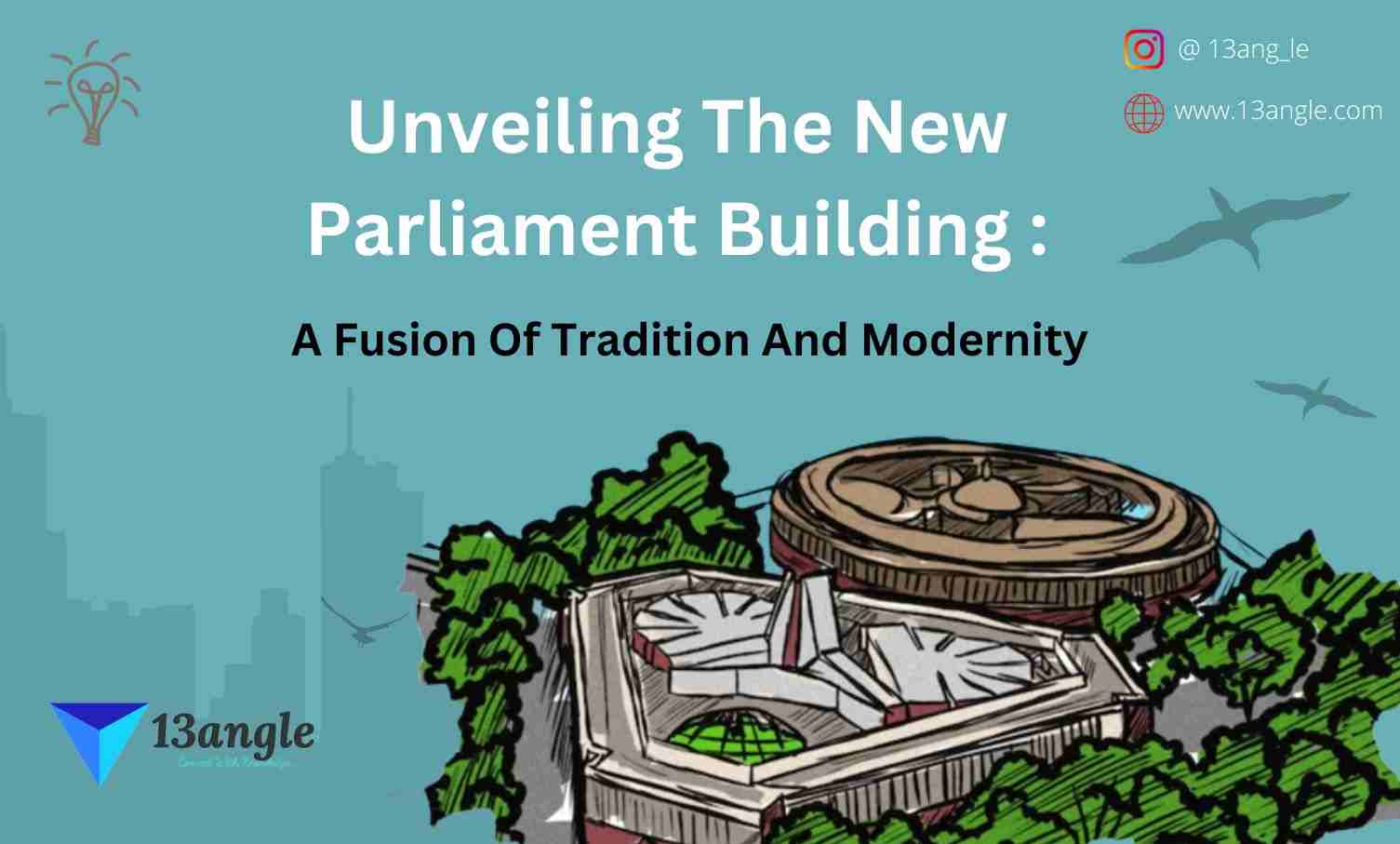- Umang Sagar
- Recent article
Unveiling The New Parliament Building: A Fusion Of Tradition And Modernity
Introduction
The grand inauguration of the new Parliament building in Delhi, led by Prime Minister Narendra Modi, marks a significant milestone in India’s architectural and political landscape. This magnificent structure, designed to embody the essence of a self-reliant India, stands as a testament to the nation’s progress and aspirations. In this article, we will delve into the key differences between the old and new Parliament buildings, exploring their designs, technological advancements, enhanced capacities, and sustainable features.
Design And Architectural Origins

The old Parliament House, a colonial-era masterpiece, was designed by British architects Sir Edwin Lutyens and Herbert Baker. In contrast, the new Parliament building has been envisioned by architect Bimal Patel and his team at HCP Design, Planning, and Management. This architectural marvel seamlessly blends Indian cultural elements with contemporary design principles, creating a harmonious fusion of tradition and modernity.
Increased Seating Capacity
One of the significant differences lies in the capacity to accommodate parliamentarians. The new building surpasses its predecessor by providing ample space for legislative proceedings. The Lok Sabha, the lower house, can now accommodate 888 members, up from the previous 543, while the Rajya Sabha, the upper house, has increased its capacity from 250 to 300 seats. This expansion reflects India’s evolving democratic system and the need to accommodate future growth.
State-of-the-Art Technology
The old Parliament House faced challenges in terms of fire safety and outdated infrastructure. However, the new building incorporates cutting-edge technology to ensure a safe and efficient legislative environment. Biometric systems streamline voting processes, while digital language interpretation and translation systems promote effective communication. Programmable microphones and virtual sound simulations within the halls create optimal acoustics, enhancing the overall experience for both parliamentarians and visitors.
Sustainable And Eco-Friendly Features
The new Parliament building embraces sustainability and eco-friendliness as key principles. Green construction materials have been utilized, reducing the environmental footprint. Moreover, the building implements energy-saving devices, aiming to reduce electricity consumption by 30%. Rainwater harvesting and solar power generation systems further promote renewable energy sources, aligning with India’s commitment to a greener future.
Enhancements In Facilities
The new Parliament House offers a range of improved facilities to enhance the functioning of parliamentary proceedings. A significantly higher number of committee rooms equipped with advanced audio-visual systems have been incorporated, facilitating the smooth operation of various committees. Special attention has been given to media facilities, providing dedicated seating for journalists and media personnel. Additionally, public-friendly designs ensure easier access for all, including children, elderly individuals, and people with disabilities.
Symbolic Themes
The Lok Sabha and Rajya Sabha chambers in the new Parliament building showcase distinct themes, adding symbolic significance to the spaces. The Lok Sabha incorporates the national bird, the Peacock, while the Rajya Sabha features the national flower, the Lotus. These thematic representations reflect India’s cultural diversity and national identity.
Conclusion
The new Parliament building stands as an architectural masterpiece that embodies India’s progress, aspirations, and commitment to democracy. With its fusion of tradition and modernity, it symbolizes the nation’s readiness to embrace the future while staying rooted in its rich heritage. This iconic structure, with its enhanced capacities, advanced technology, and sustainable features, paves the way for a dynamic and efficient legislative environment. As India steps into a new era, the new Parliament building serves as a beacon of progress and a testament to the country’s vibrant democratic spirit.
Top 13 Facts About New Parliament Building
The new Parliament building in Delhi was inaugurated by Prime Minister Narendra Modi, symbolizing India’s self-reliant spirit.
Designed by architect Bimal Patel and his team at HCP Design, Planning and Management, the new building seamlessly blends Indian cultural elements with contemporary design principles.
The new Parliament building can accommodate 888 members in the Lok Sabha (up from 543) and 300 members in the Rajya Sabha (up from 250).
State-of-the-art technology has been incorporated into the new building, including biometrics for voting, digital language interpretation systems, and programmable microphones.
The new Parliament building addresses the fire safety concerns of the old building, ensuring compliance with current norms and minimizing potential hazards.
Interiors of the halls in the new building are equipped with virtual sound simulations, creating optimal levels of reverberation and limiting echoes.
The old Parliament House was designed by British architects Sir Edwin Lutyens and Herbert Baker during the colonial era.
The new Parliament building and the restored old building will jointly house all the facilities that are currently located in the existing Parliament House.
The new building is earthquake-proof, designed to withstand strong shocks in Zone 5, considering Delhi’s increased seismic activity.
The Lok Sabha Hall in the new Parliament House will be used for joint sessions, eliminating the need for additional chairs during such sessions.
The Lok Sabha chamber in the new building showcases the national bird, the Peacock, while the Rajya Sabha chamber features the national flower, the Lotus.
The new Parliament building prioritizes sustainability and eco-friendliness, utilizing green construction materials and incorporating devices to save 30% electricity consumption.
Enhanced facilities include a higher number of committee rooms with advanced audio-visual systems, dedicated media seating, and public-friendly designs for easier access.
These facts highlight the architectural, technological, and functional advancements in the new Parliament building, showcasing India’s progress in creating a modern legislative environment while respecting its rich cultural heritage.
Also read...

Architecture Of The New Indian Parliament




